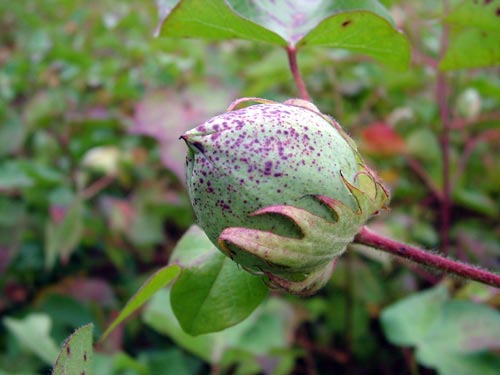September 3, 2010

Prior to the days of Bt cotton and boll weevil eradication, cotton producers managed their crops for earliness to avoid the late-season build up of insect pests such as boll weevils and pyrethroid-resistant tobacco budworms.
Producers relied on cultural control methods such as early-maturing varieties and planting dates to set an early crop and minimize late-season losses from these insects.
Bt cottons provide excellent control of tobacco budworms.
Coupled with eradication of the boll weevil, producers have been able to shift back to higher yielding full-season varieties such as DP 555BR and STN 5599BR.
Since that time, the tarnished plant bug has become the number one insect pest of cotton in the Mid-South.
Widespread resistance to the organophosphates and pyrethroids has caused control costs for this one insect pest to significantly increase. Producers in the Delta region of Mississippi routinely spend $80 to $100 per acre to control tarnished plant bugs.
With the shift to full-season varieties, the crop is in the field later and, therefore, susceptible to injury from plant bugs for a longer period of time. This translates to additional insecticide applications being required to minimize yield losses.
Researchers across the Mid-South have been diligently working on better ways to manage plant bugs through chemical and non-chemical methods to reduce economic losses associated with this pest. Because of high levels of resistance to pyrethroid and organophosphate insecticides, producers should utilize all the tools available to control plant bugs.
Foliar insecticides alone are not sufficient to manage this pest in the Delta. Research over the last several years at Stoneville, Miss., has shown that planting an early variety compared to a full-season variety can save an average of two insecticide applications. While relative maturity can be used to minimize exposure, manipulation of planting dates has the greatest impact.
Brian Adams, a graduate student at Mississippi State University, is currently working on the effects of “planting date x maturity” and its influence on tarnished plant bug populations in the Delta. Preliminary results from 2010 show that April 15 plantings required only three applications for plant bugs; May 1 plantings required four applications; and May 15 and May 30 plantings both required seven applications to adequately manage plant bugs.
Earliness is the key to helping manage this pest whether through maturity selection or planting date. Results have shown that planting date is the best way to achieve earliness. Over the years we have tested numerous non-foliar methods to complement the foliar insecticides we use such as nectariless varieties, blocking cotton away from corn, destroying wild host plants, and side-dressing Temik in cotton next to corn. All have some effect on plant bug populations, but the biggest factor we have seen so far is setting an early crop and getting it out of the field as early as we can.
Timely foliar applications are also extremely important in retaining the earliness of the crop. If we are late on applications when thresholds are reached and we lose fruit, the crop is delayed. When this occurs, catching up with plant bug management is difficult and adds additional control costs to the overall program. We see this in some fields every year.
Good fruit retention plays an important role in keeping the crop early.
While plant bugs are on every cotton producer’s mind, they can be successfully managed. There are many small things we can do to complement our foliar insecticide program and when we incorporate all the tools into an integrated approach, producers will be able to keep plant bugs at a manageable level without breaking the bank.
You May Also Like




